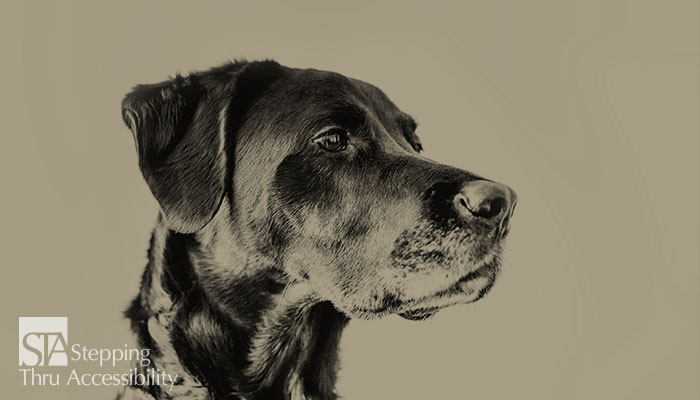Blog
Return to Blog »
Janis Kent, FAIA Architect, CASp © May 2018 Many times issues come up regarding the presence of animals in public spaces and places of public accommodation. Most building/business owners (hopefully) know enough to allow the service animal in and that they can not ask a person with an animal what their disability is. But the question is – is the animal really a service animal – how can they tell, and which animals are they required to allow to enter the premises? Unfortunately there may not be a clear cut way of knowing whether someone bringing their dog onto the premises is actually a service animal. Basically there are two types of designations — emotional support animals and service animals. It is somewhat amazing what our furry friends can actually be trained to do. Their training is something that happens over a period of time with refresher courses for the animal and their person. It is quite remarkable, in my opinion, and something to honor. A dog whose presence is as a crime deterrent, or for emotional support, comfort, or companionship is not considered a service animal under the ADA per definition. Currently there are no licenses, special tags, or documents for service animals, although there is indeed special training. A place of public accommodation can not ask about a person’s disability, although if it is not immediately apparent what the animal is trained to do, they can ask 1) if the animal is required due to a disability, and 2) what work or task the animal has been trained to perform. It is also presumed that service animals are well trained – that they are housebroken and under control of their handler. This means they have some type of harness or leash unless the tasks they perform preclude that or a person’s disability preludes the use of a tether, in which case voice, or signals can be used. If a service animal is excluded from a property due to not being housebroken or under the control of their handler, the person with a disability should still have the opportunity to have access to the goods, services, and accommodations. A service animal is allowed to accompany their person into all areas of a place of public accommodation where the person is allowed, which includes restaurants and food service as well. There are to be no surcharges for having a service animal even if there are for pets such as in a hotel. If normally there are damage charges for a person who has a pet, then a person with a service animal can also be charged if there is damage. A word on miniature horses acting as service animals – for instance, a horse can be considered useful if a person has an allergy to dogs. These horses also have to meet the requirements for being trained and performing a task similar to a service dog. The one difference for consideration is whether the miniature horse in a specific facility can cause a legitimate safety concern which could depend upon type, size, and weight. With all of this said, this is more of a policy and practices concern for a building manager or tenant. What might be useful for consideration by architects and designers, on the physical aspect, is to provide a comfort area for service animals – a doggie port-a-potty, and there is indeed a company that does make these, which looks like a patch of artificial turf that is easily cleanable, some even with their own fire hydrant prop. Just a thought. Be aware that your local City or County may have additional requirements that are more restrictive than the State or Federal requirements. Also, this article is an interpretation and opinion of the writer. It is meant as a summary – current original regulations should always be reviewed when making any decisions. © Janis Kent, Architect, FAIA, CASp May, 2018 If you like this article and would like to see more, please consider subscribing to our mailing list »Companion Animals, Service Animals, and Access
